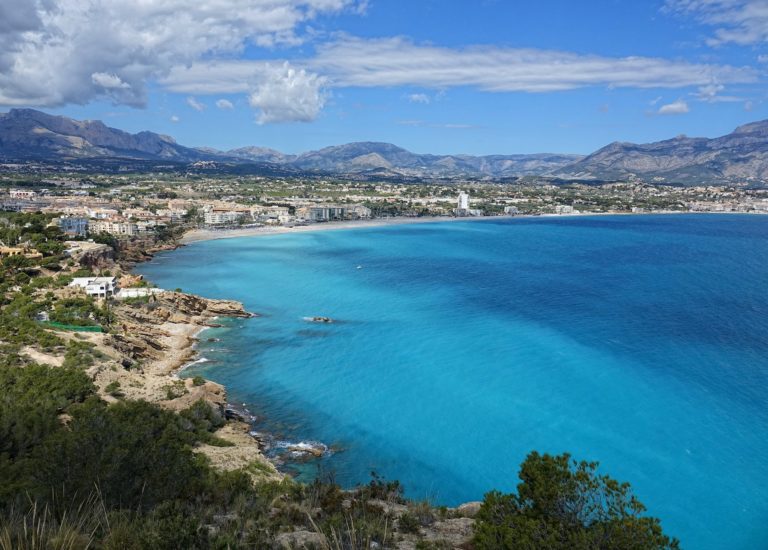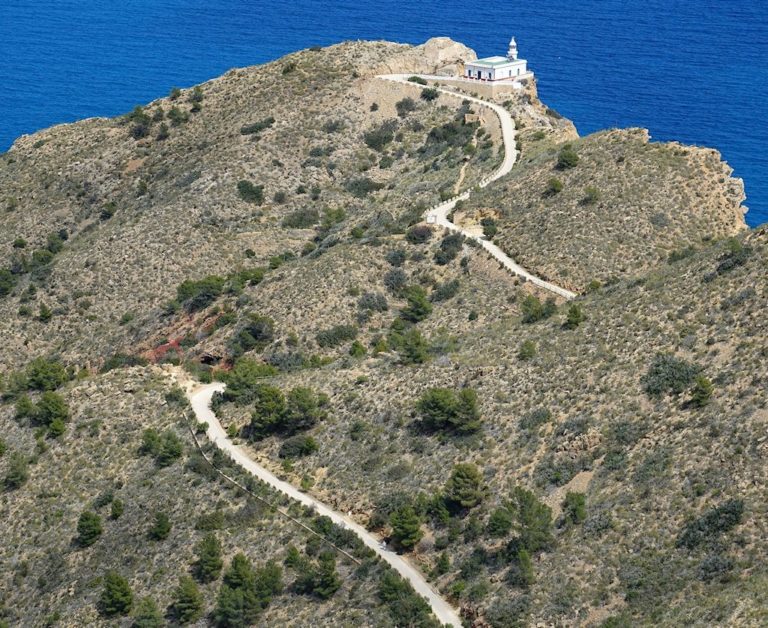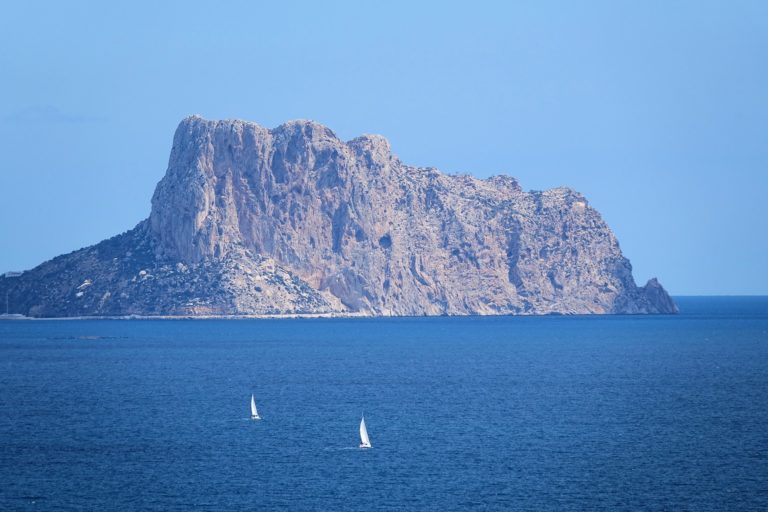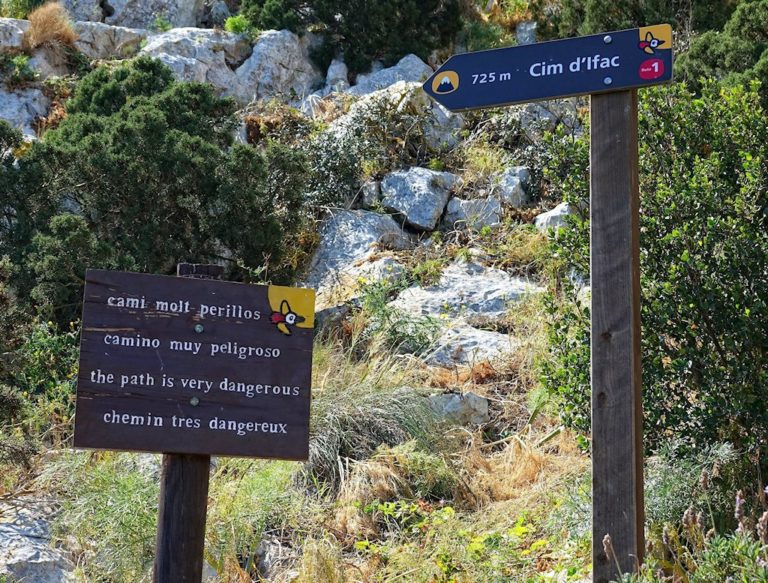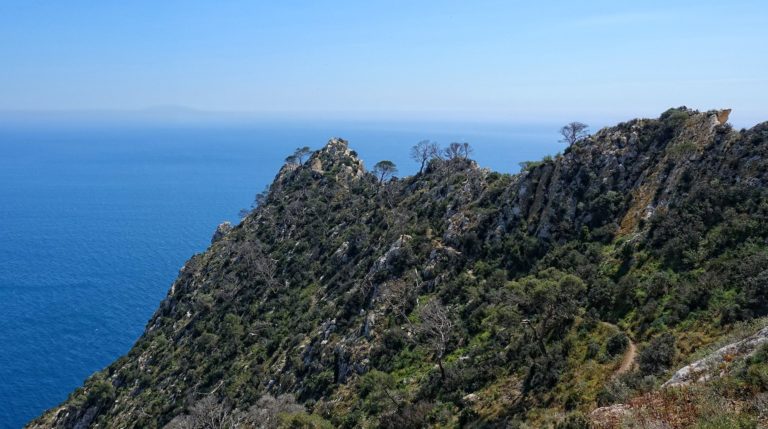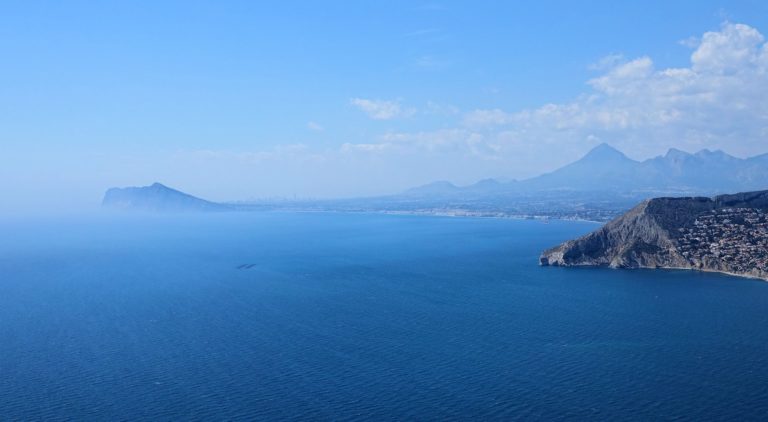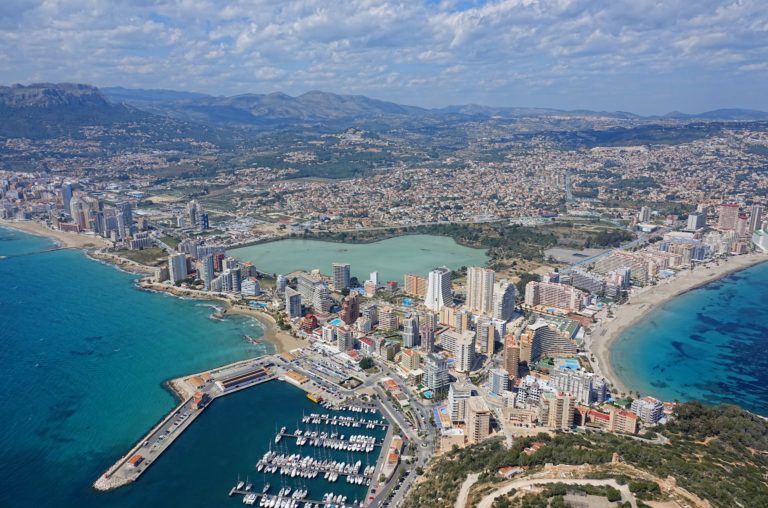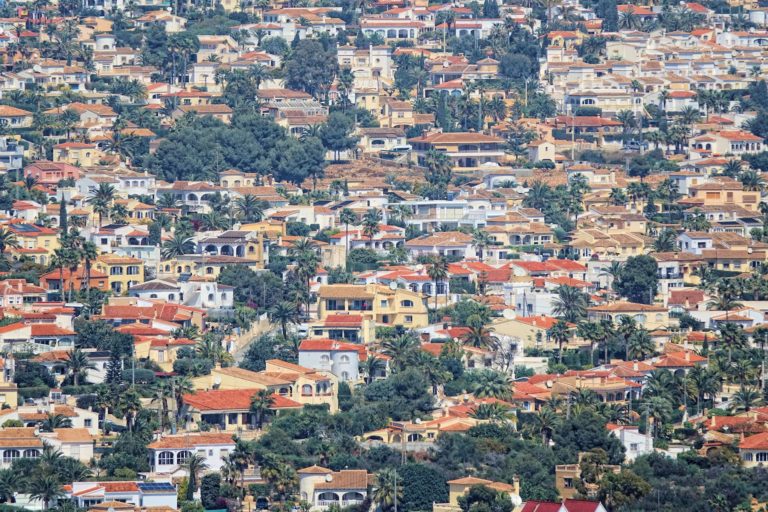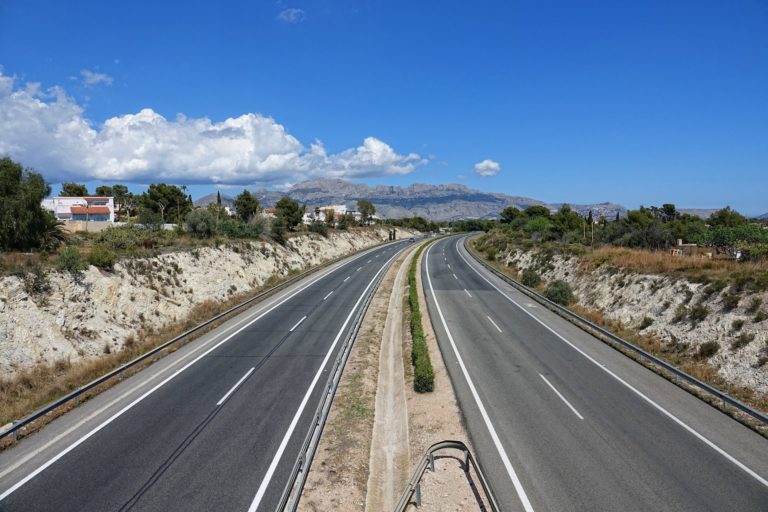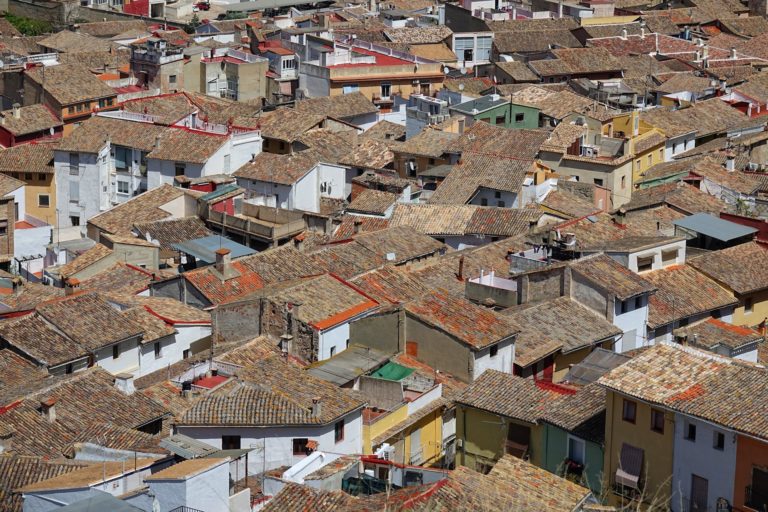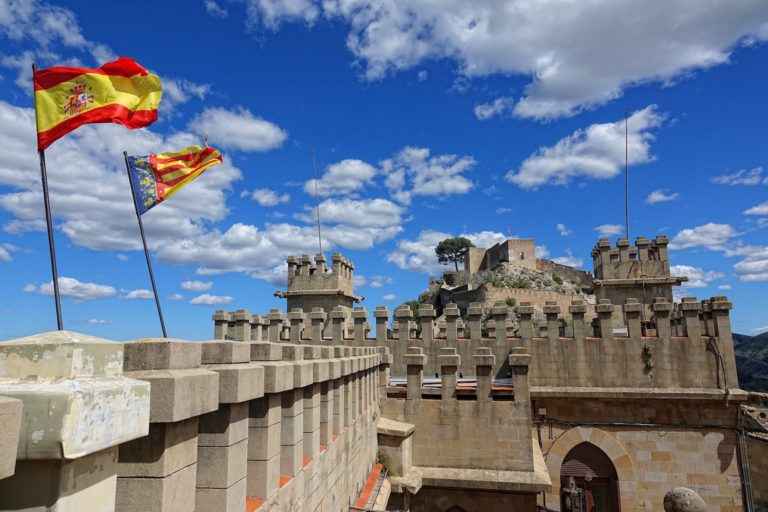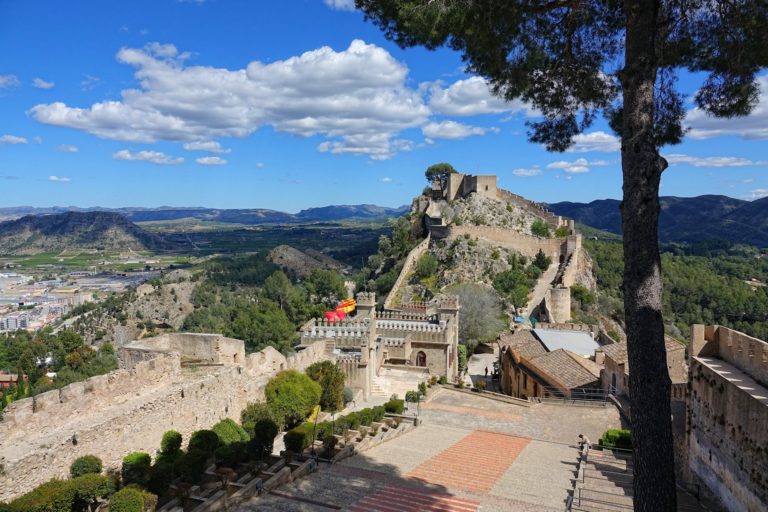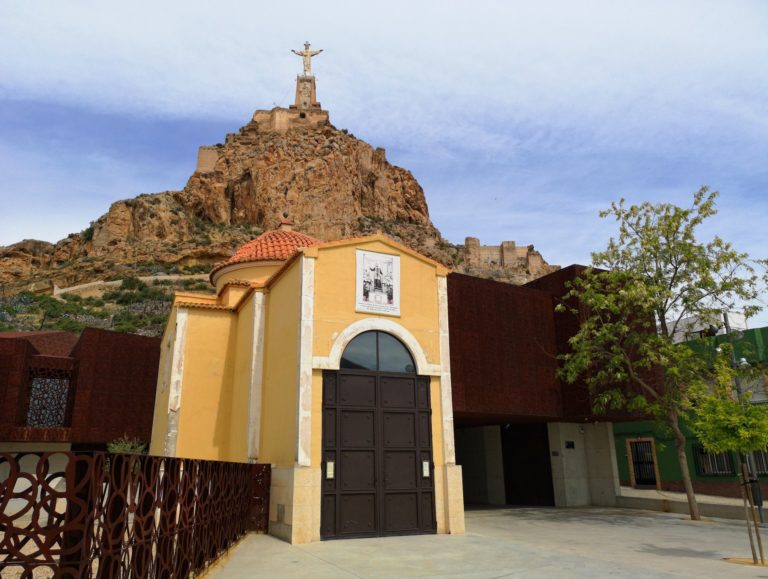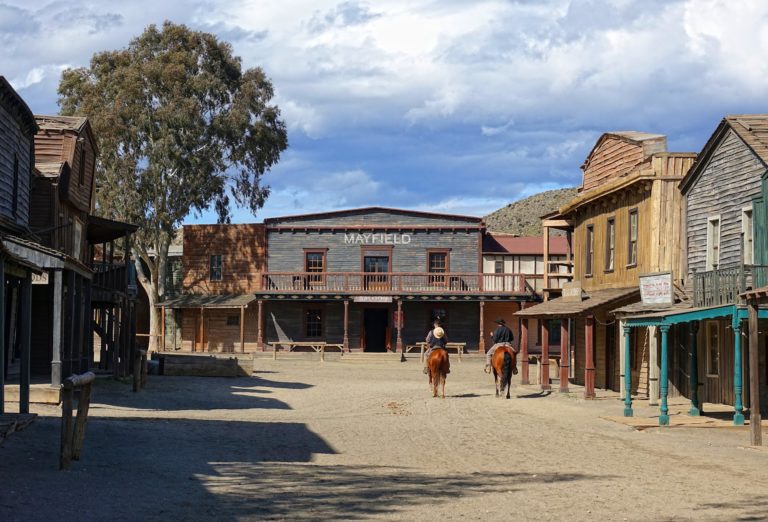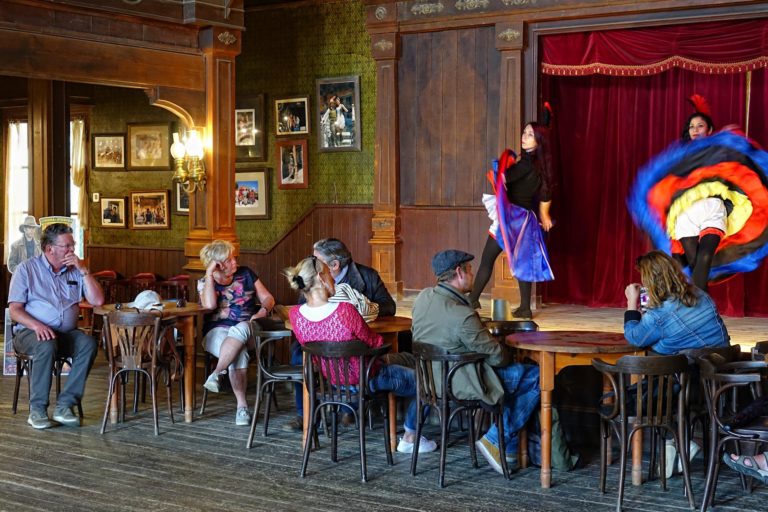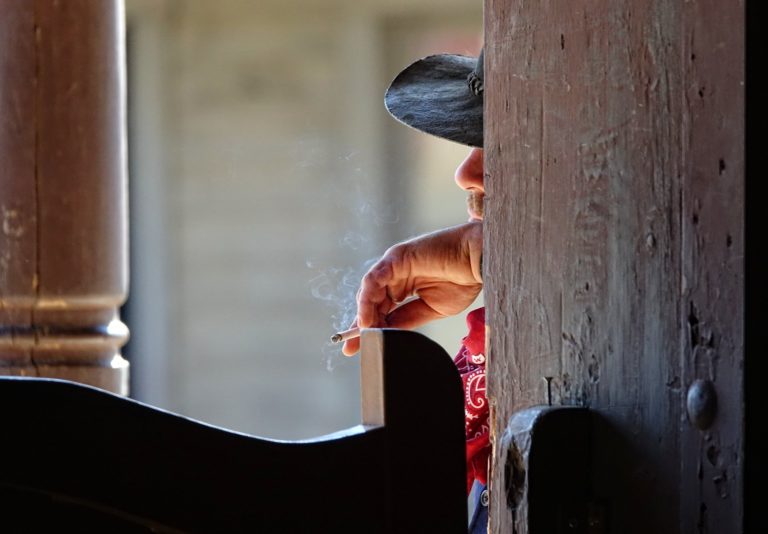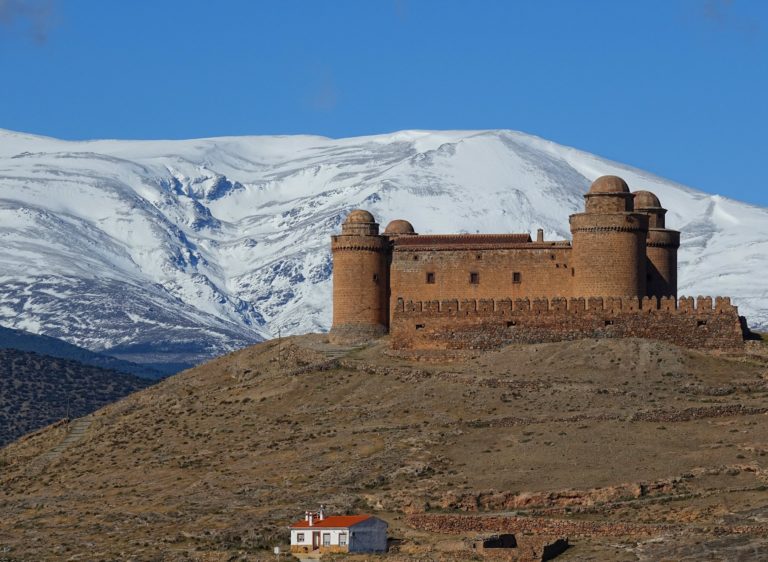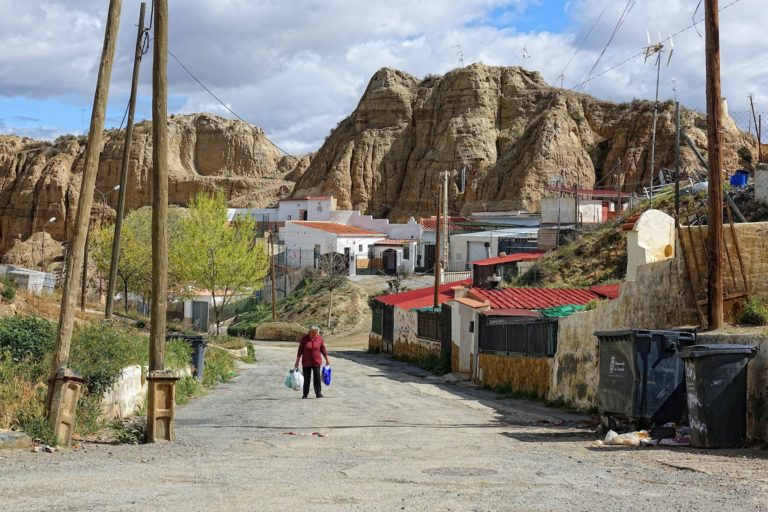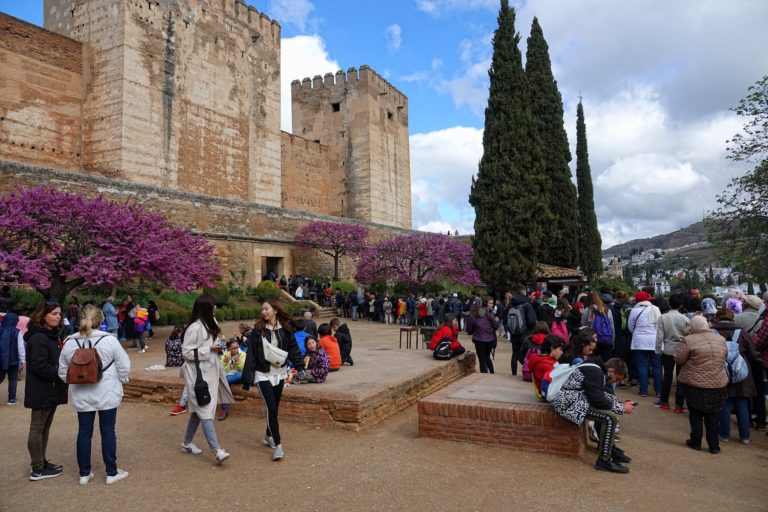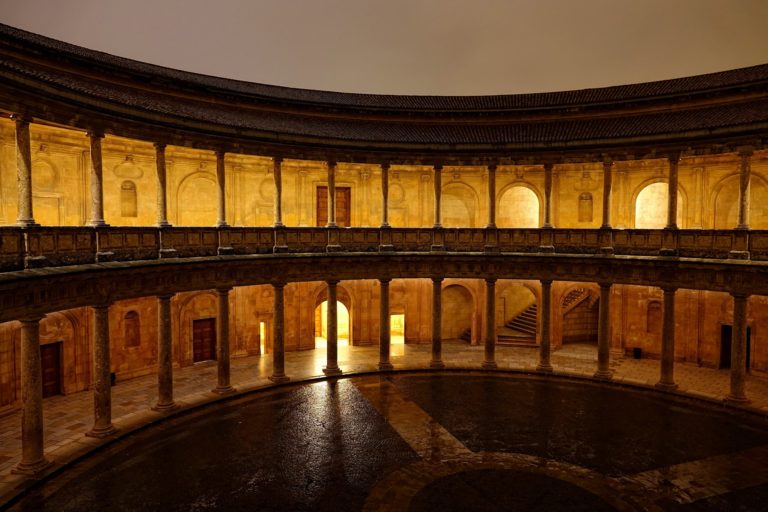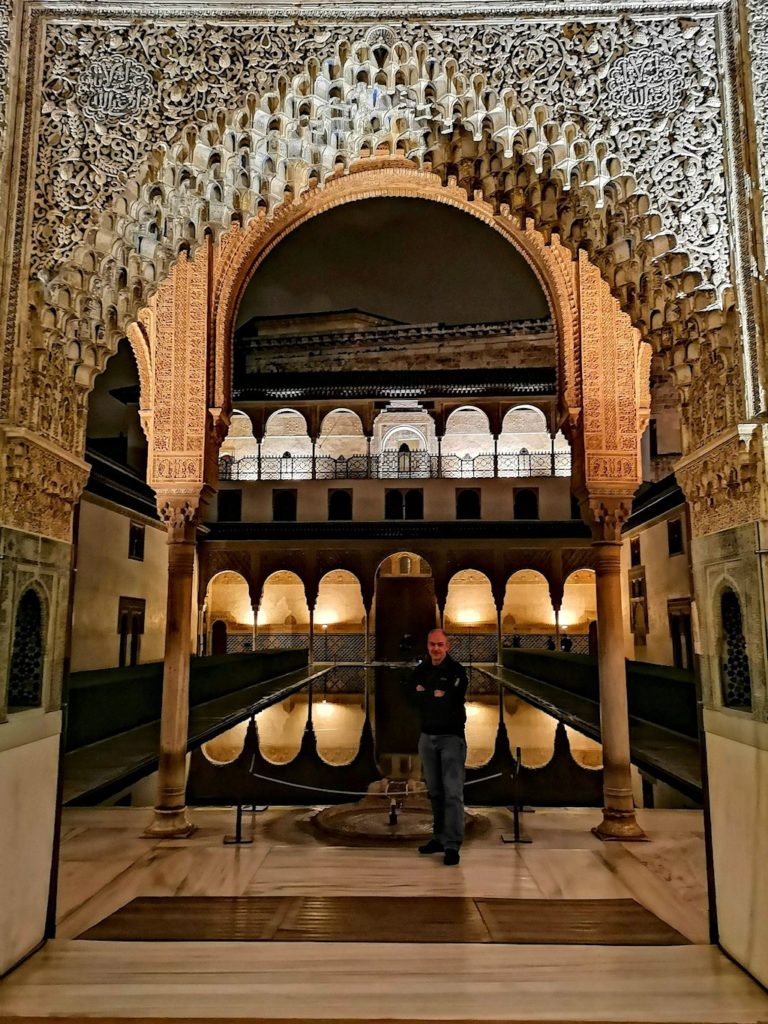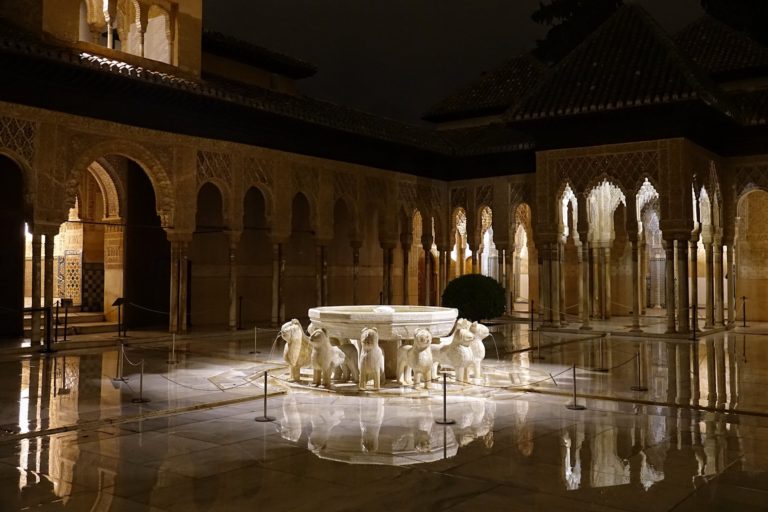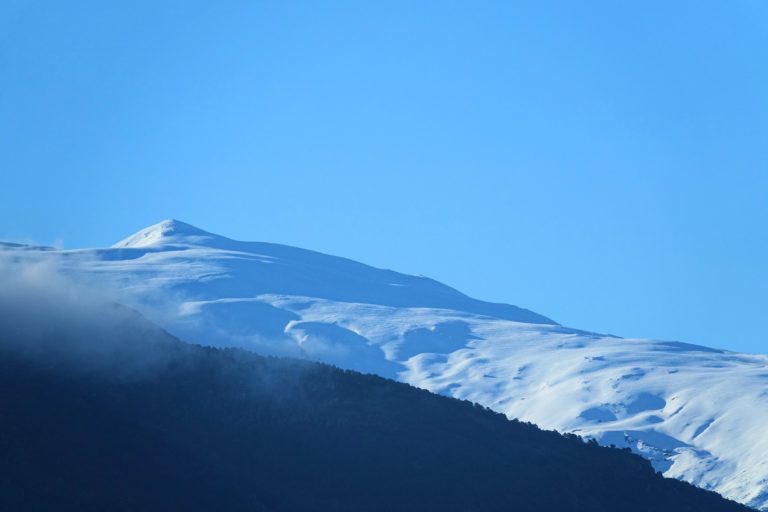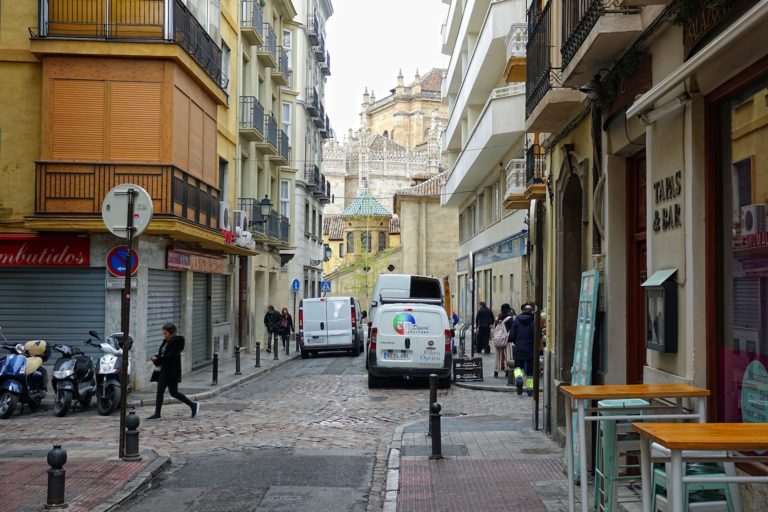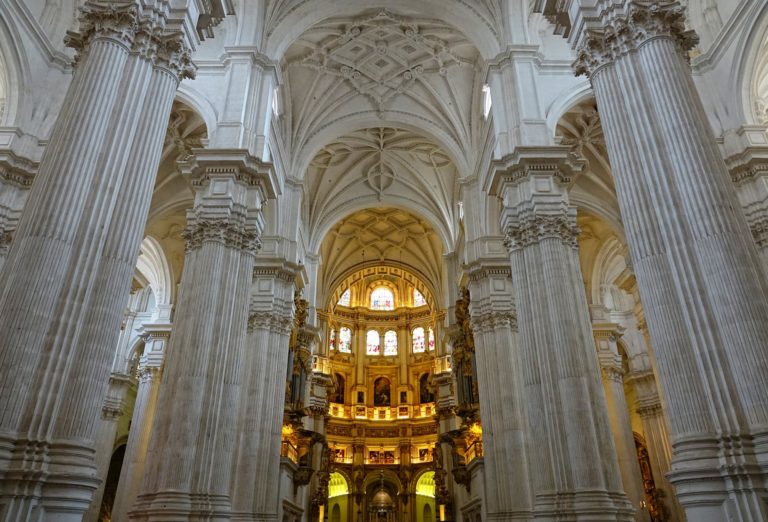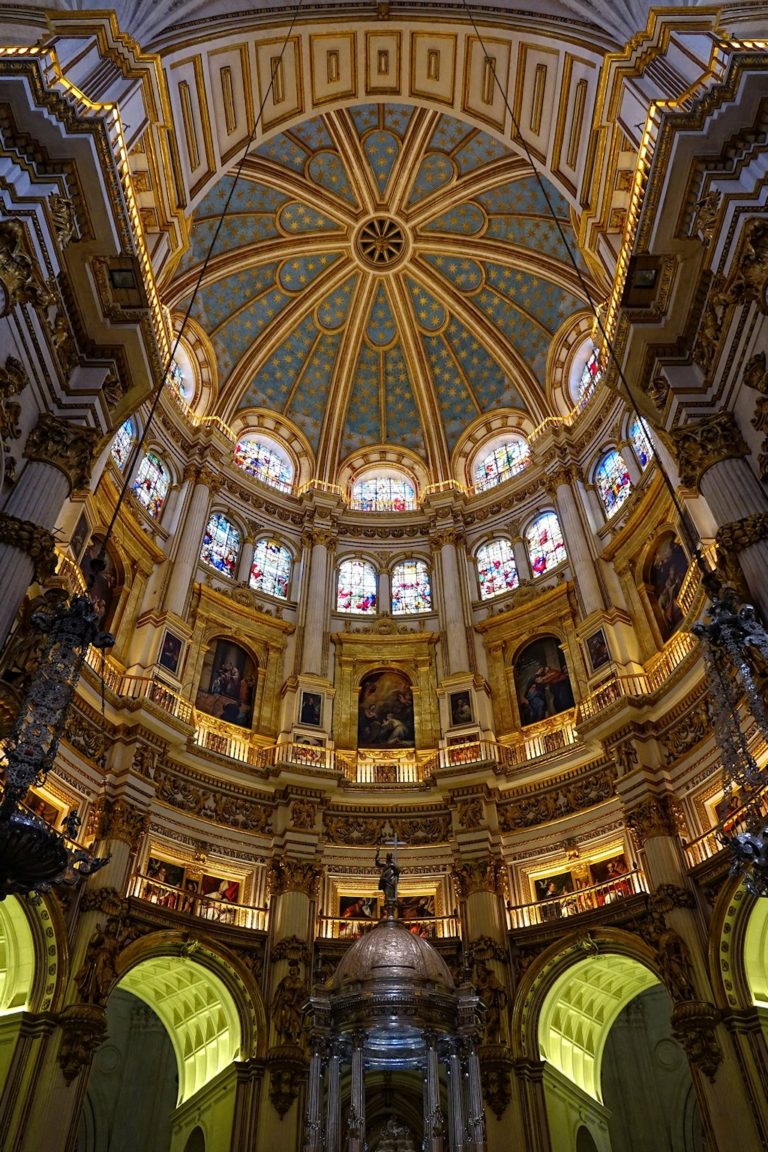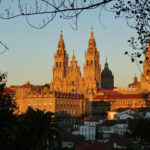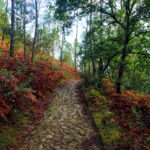Sometimes you may feel like you’re trapped in tourist hell, but it’s usually easy to get out of it. Just walking a few blocks will often help a lot. Other times you will have to find the bus station or rent a car and just go.
Imagine yourself in that epicenter of package tours and stag parties of Benidorm, Spain. Now I’ll show you what you can do in five days, if you have a rental car and sufficient energy to spend.
A 15 minute drive makes a huge difference. We arrive in Albir, a pretty town with a quiet beach and a pleasant coastal walk through the Parque Natural de Serra Gelada. Yes, there are still many northern European retirees around, but there are no night clubs or gangs of sunburned and drunk Brits. It’s a welcome change, surprisingly close to all the things we want to get away from.
From the eastern end of Albir, we follow the Camino del Faro trail for 40 minutes. There are pretty views all the way to the lighthouse. It’s worth sitting down here and look at the sea for a while. There’s a good chance of seeing dolphins playing in the big blue.
If you’re impressed by the tall buildings in Benidorm, you will be even more taken by the cliffs below Serra Gelada. This coastline is a dramatic one.
From the lighthouse, our eyes feast on the next cape, which is no less. We’re looking towards Calpe.
It doesn’t exactly look inviting, but we decide to drive over there. It takes about 30 minutes.
Somewhat surprisingly, it turns out that it’s actually possible to hike up to the top of the mountain, thanks to a trail going up the other side. There are literally warning signs that it’s not the easiest of hikes, but hey, you only live once, right?
The first part of the trail is rough, but not too difficult. It takes us out to the end of the Ifac peninsula, where we can just about catch a glimpse of Ibiza on the horizon.
The next part is a bit harder. My parents are coming along, and they are only 72 and 75 years old, so it’s fine to continue.
From the top we enjoy a magnificent view. In the distance to the southwest we see Albir in front of the high-rise buildings in Benidorm. It feels good to have put some distance between that world and this one.
Calpe is like a mix of Albir and Benidorm. The buildings here are taller than in Albir, and a little bit busier, but it’s still nice and quiet. And even all that concrete looks quite attractive from the top of Calpe, resembling Rio de Janeiro, only without the violence.
This is what happens when all the wealthy retirees from northern Europe decide to spend their golden years in pretty much the same spot.
After a long day of hiking, we spend the next day on a road trip. In much of Spain you can choose between paying a handsome amount of money for a fast journeyt on a highway with no side roads, or you can travel for free on slightly slower and less safe roads that go straight through towns.
I swear, there’s more traffic anywhere in North Korea than there is on the toll roads of Costa Blanca.
Using Autopista 7, the “Mediterranean Highway”, it takes just an hour to drive from Benidorm to Gandia. There we visit the Ducal Palace. home to the infamous Borja/Borgia family. If you know some Spanish and/or Jesuit history, you will know about this, but the short version is that this family was known for committing adultery, incest, simony, theft, bribery, and murder, specializing in arsenic. I reckon that if their palace is half as colorful as their family history, it should be well worth visiting.
The palace is as we hoped for. It’s richly decorated and you can smell the history in the hallways. It’s also pleasantly uncrowded. We can wander through the palace in solitude. This is in April, mind you. Come summer, the hordes will probably have arrived. For now, though, this is like having a small piece of the permanently jammed Versailles all to ourselves.
Being a duke in this part of Spain in the 16th century must have been nice and comfortable, despite the lack of wifi.
Another hour of driving west across mountains and farmland brings us to Xativa.
I so wish it was called La Xativa, but it’s close enough. Driving through the old town here is a challenge, so some traffical laxatives would have been welcome.
Our main reason for visiting Xativa is the castle located on the mountain ridge above the town center. It’s a massive complex, and although much of it has fallen hard into decay, it’s easy to sense the grandeur it once must have possessed. This place is as medieval as it gets.
The castle is balancing on a narrow ridge, strategically overlooking the huge plains between Valencia and the mountains. Because every age has built on top of the previous one, no one seems to know even roughly how old this place is. Still, Xativa has certainly been an important place for several millennia. When it was known as Saetabis, about 2,000 years ago, the Romans built a good road through here, Via Augusta, connecting Rome to the far reaches of the Iberian peninsula.
Standing in front of an ancient window looking out on timeless hills is a great way to cool down after a steep hike on a warm day.
Xativa is also a good place to spend the night in a relatively normal, Spanish town. Tomorrow will be a long day of driving.
We begin day three with a scenic drive through the mountains north of Alicante. After a couple of hours we take a break in Monteagudo, just north of Murcia.
Jesus watches over us. Again, Rio de Janeiro comes to mind. This Jesus statue is huge! Sadly, no one has the money to maintain it, so it’s slowly falling down, making it unsafe to go up there. But the village below it is a good place to stop for fuel and ice cream.
Our next stop is Fort Bravo, near Tabernas, north of Almería. It looks like a town in the old American Wild West. This is no coincidence.
Fort Bravo used to be a film set, and sometimes it still is. These days, however, it is more of a theme park, also known as Texas Hollywood. This area has been used in hundreds of films, music videos and commercials. You most likely have seen many of them. It’s fun to walk around and imagine yourself present in a different era.
They’ve made a good job at creating that frontier town atmosphere. And visiting in April, there aren’t many other tourists around to break the illusion.
Even with just a handful of visitors around, the “theme park” puts on a twice daily wild west show. The performers don’t seem to be too enthusiastic about it, though.
While the girls dance the Can-can to their fullest ability, a male actor hangs around the saloon entrance looking as cowboyish as possible.
The show just goes on and on, in rapid fire Spanish only, with the less than happy actors still enjoying the show more than the audience does. Some people appear to suffer from some kind of PTSD, covering their ears, while others just politely wait for the actors to finish shooting each other to silence.
While visiting Texas Hollywood is okay, I think you can probably safely skip the show and spend your time better elsewhere. Oh, and there’s another similar park nearby, offering the same thing, called Oasys Mini Hollywood. Pick your poison.
Our final stop for today is a small village south of Guadix. This whole area is famous for its numerous cave houses. It’s somewhat like the famous caves of Cappadocia in Turkey.
We stay for the night in a cave hotel. It’s fun to try, but while it’s probably good to live in a cool cave during the hot summer months, it’s actually just a tad too cold for comfort in April when there’s still fresh snow on the nearby mountains. We’re at almost 1,000 meters above sea level, and winter has not quite ended yet.
Our bedroom inside the cave is colder than it looks, but still plenty cozy.
On day four we first backtrack ever so slightly. Last night we drove past an ominous-looking castle on a hilltop, but it was raining and we were tired. In daylight it turns out to be a stunning Italian Renaissance building, more than 500 years old. The red stone building looks absolutely stunning against the background of Sierra Nevada covered in snow.
Entering Guadix, at first it looks like your average old Spanish city with a cathedral and many alleys. After parking the park and exploring a bit, we find some old Roman ruins, as well as the part of the city which is old and built straight into the ground. These modern day cave dwellers still go about with their everyday life, acting as if they haven’t even noticed that the rest of us moved out of caves a long time ago.
From Guadix it’s just another hour of driving to Granada. But we’re not just going to Granada in general, but to the UNESCO World Heritage site of Alhambra, right in the middle of the city. So we spend almost another hour slowly making our way through the dense city center.
We park the car at our hotel next to the palace complex, and we walk up to the viewpoint at the San Juan Church across the valley and the Albaicín. This is Arabic, and may or may not mean “suburb of falconers”. Anyway, this city is full of traces of its Muslim history, and that’s why we’re here.
And we’re absolutely not alone here. The Alhambra is a major tourist hot spot in Spain, so to avoid disappointment, it’s important to book your tickets ahead.
Wherever you go, there’s a crowd of tourists like yourself around. Like here, in the courtyard of the Palace of Charles V.
If you want more historic atmosphere, try visiting in the evening. Again, you need to book your tickets well in advance to be allowed entrance to the main sights of the Alhambra. And if you do, you can enjoy this beautifully lit version of the Palace of Charles V, which feels a bit more authentic than the daytime version.
Actually, you don’t need a ticket for this particular part of the Alhambra. So if you can’t manage to get tickets at all, you can still walk around some parts for free, both day and night. The best parts require a ticket, but you don’t have to miss out completely.
If you want the best experience at the famous Court of the Myrtles in the Plaza de Nazaríes, do book yourself tickets for the night viewing, and enter as the last person.
Don’t worry, you still have time to see it all.
Those who enter first will annoy each other with loud voices and getting in the way of photos, while you will have a quiet time and can enjoy all the details.
You will not for a second forget the fact that the Alhambra complex has Moorish/Muslim origins. The walls and ceilings are covered in Arabic writing and the symmetrical patterns that are so typical for Islam.
It’s very pretty, but I can’t help thinking that if you really want to see the best of the best, you should probably head over to the Topkapı Palace in Istanbul instead. But for this part of Europe, Alhambra and Sevilla as a combo is a pretty good alternative.
A little bit of rain in the evening makes the Fountain of Lions in Alhambra look twice as interesting. These stone animals are almost a thousand years old, with the original water flow
system still operational.
We start day five with a visit to the San Jose cemetery near Alhambra. It’s obviously not a tourist attraction, but as long as you behave respectfully, it’s okay.
From here we can look east towards Sierra Nevada, where even in April it seems to still offer some good skiing.
It’s springtime, and I would guess that this is when the cemetery looks its finest. Many of the trees are in full blossom. I’d love to be grieving here.
Before we leave Granada, we walk down from the Alhambra to see one of the greatest cathedrals in Spain.
It’s hard to get an idea of the size and splendour of the building from the outside, as it is completely surrounded by busy and narrow city streets. At last we find it hidden away at the end of Calle Almireceros.
The Granada Cathedral was funded and built after Spain kicked out the Muslims from this region, and it was definitely designed to look impressive next to the mosques and the Alhambra left behind by them. It’s a huge building, with enormous pillars and infinite beautiful details.
Of course, this being a Catholic cathedral, it has to be peppered with naked and golden small dudes.
The cathedral’s cupola is flying high above the church floor, covered in heavenly stars. The walls below are covered in paintings worthy of the best art museums in the world. And gold, of course. Lots and lots of gold.
If Alhambra disappoints you even the slightest bit, do head down to the cathedral to possibly be pleasantly surprised.
Done with Granada, we return to Benidorm. It can be done as a four hour drive on the main highway. We have time to spare, so we mix in a few detours along smaller coastal roads. Here’s Calahonda, one of many pretty villages we pass through.
And then we’re back in Touristia. It’s fine. We’re flying home tomorrow anyway.
Road Trip Top Tip
- When renting a car in Spain, do not be afraid to use a local rental company instead of the big international brands. They’re usually much cheaper, despite offering great cars and service. The one exception may be if you want to drive all across Spain, as a local company may not offer nationwide roadside support. But if you’re just going to be driving around relatively close to where you rent your car, pick an inexpensive option.
- Never pay to rent GPS navigation from the rental company. Instead I recommend using the Maps.Me phone app, and download all the maps you need when you have wifi. This will give you great and free navigation wherever you go.
Here’s the route we followed on this trip, in case you want to use it as a starting point for your own planning:
